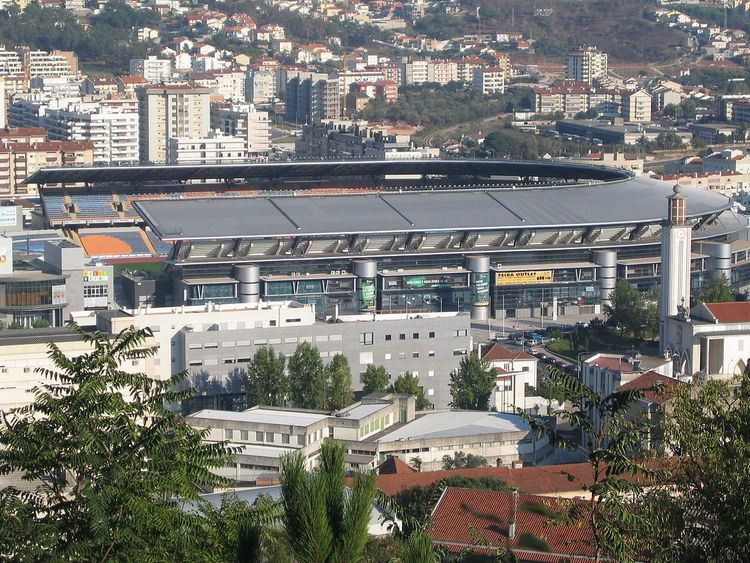Field size 105mx70m Capacity 30,210 Phone +351 239 798 090 | Surface Grass Opened 12 September 2003 Architect António Monteiro | |
 | ||
Former names Estádio Municipal de Coimbra Owner Municipality of Coimbra Team Associação Académica de Coimbra – O.A.F. Similar Estádio D Afonso Henriques, Estádio Municipal de Aveiro, Estádio Dr Magalhães Pessoa, Monastery of Santa Clara‑a‑Velha, Portugal dos Pequenitos | ||
Constru o est dio cidade de coimbra coimbra
The Estádio Cidade de Coimbra is a stadium in Coimbra, Portugal. This stadium belongs to the Municipality of Coimbra and is mainly used by the Académica de Coimbra's football team. Until 2003, it was called the Estádio Municipal de Coimbra (English: Municipality of Coimbra Stadium), or the Estádio do Calhabé, after the name of its location in Coimbra.
Contents
- Constru o est dio cidade de coimbra coimbra
- Est dio cidade de coimbra
- Features
- UEFA Euro 2004
- Portugal national football team
- Concerts
- References
The stadium was rebuilt, expanded, and modernized to host some UEFA Euro 2004 matches. Far beyond the sports stadium itself, all the project, called Euro Stadium Project, included the possibility of organizing sports, culture, and commercial events, by the modernization of the entire Calhabé area in Coimbra.
On 29 October 2003, Académica de Coimbra played at home to Sport Lisboa e Benfica in the first official match in the remodelled stadium.
Est dio cidade de coimbra
Features
Its design does not involve any historical or traditional references, as the idea was to create a new, contemporary image with glass façades and an aesthetic roof supported by elegant stands. The existing athletics track has been preserved for possible use as a multi-purpose facility in the future. The stadium was designed by the Portuguese architectural firm Plarq in association with KSS Design Group of London. The Plarq team was led by the architect António Monteiro.
The stadium has 30,210 seats, two-thirds of which are covered. The complex boasts a large press centre, a bar, kitchens, and a restaurant with a panoramic view of the pitch. The project of the stadium took advantage of old seats: of close to 15,000 (all seated), involved the planned remodelling of the tier which extends around the entire perimeter of the previous stands, and a second tier above that, in the form of a "U", opening onto the slopes of the city at the North end.
A multi-purpose pavilion, olympic swimming pools, healthclub, gym, offices and studio apartment residences were built in the surrounding area. The Alma Shopping, a shopping and leisure center built near the stadium, includes cinemas, underground car parking, restaurants, and several retail outlets.
UEFA Euro 2004
The stadium hosted two UEFA Euro 2004 Group B matches: England 3–0 Switzerland and Switzerland 1–3 France. Curiously in both matches, the record for the European Championship's youngest goalscorer was broken, first by Wayne Rooney, then by Johan Vonlanthen.
Portugal national football team
The following national team matches were held in the stadium, both in its old and renovated shape.
Concerts
In addition to football, the stadium is often used for concerts of international artists with capacity up to 50,000 people.
The stadium was inaugurated with a Rolling Stones concert on 27 September 2003, attended by over 50,000 people.
George Michael played there in 2007 during the 25 Live Tour.
In 2010, U2 played two sold-out shows in the stadium during their U2 360° Tour.
On June 24, 2012, Madonna performed in front of 33,597 people as part of her MDNA Tour.
